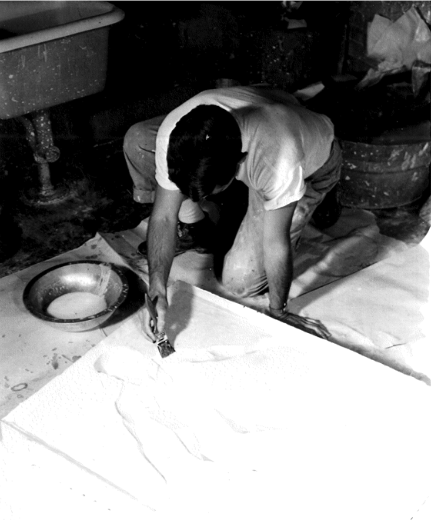CINCINNATI — One man's effort to save his grandpa's art is now highlighting the future of a hidden gem attraction in Camp Washington.
The exterior of the American Sign Museum facing Monmouth Avenue features the iconic "Cincinnati Gardens" letters, now instead spelling "Cincinnati Sign Garden," and a smattering of defunct business and long lost local logos on a 300-foot steel grid below it.
It also features another piece of the old Gardens building, saved from the former venue's wrecking ball in 2018: three bas-relief (sculpture) pieces that once flanked the entrance.
The sculptures feature a boxer, basketball player and hockey player - representing each of the Gardens' resident sports for decades.

"I thought they might end up in a landfill one day and I didn't want that to happen and I did everything I could to find them a home," said John Peckskamp.
Peckskamp is the grandson of artist and marketer Henry Hank Mott, who designed the sculptures while an art student in Cincinnati in the 1940s. Mott won a contest with his designs and took home $300. Family photos show him creating the clay models of each of the three athletes, which would then be cast in plaster and carved from limestone.

The finished sculptures weigh about 1,200 pounds each, according to Peckskamp. He called saving them a 'labor of love.'
"I think he'd be pretty happy," Peckskamp said. "He was very proud of them back in the day and I remember him taking me to the Gardens when I was little boy and saying, 'I did those.'"
The Gardens, in Bond Hill, hosted sporting events and concerts along with comedians, symphony orchestras, Broadway-style musicals, political rallies, roller derby, circuses, dog shows, dirt track auto racing and faith events. Countless spectators saw those figures as they entered the arena.
The Gardens was the seventh-largest arena in the country at the time of its opening Feb. 22, 1949 when the Montreal Canadians played an exhibition hockey game in front of 11,500 fans. It closed in 2016.
Peckskamp worked with The Port and O'Rourke demolition crews to save the bas-relief pieces - six in total, three one each side of the entrance. He said Buddy LaRosa got one boxer, Xavier University got one basketball player, and the rest were stored for a time in a Madisonville parking lot. Then he saw the American Sign Museum got the "Cincinnati Gardens" letters.
He made a cold call.
"I was like, 'what?'" said Tod Swormstedt, the museum's founder. "Incredibly, he goes, 'we can probably work it out that you can have a set.'"
Swormstedt knew they belonged underneath the Gardens sign, prominently displayed with other signs as part of the new "Cincinnati Sign Garden," a clever use of the iconic building's old letters with a new "ign" Swormstedt had made. Future additions will include space for street art, a "Greetings from Camp Washington" postcard and a proper sign for the museum, he said.

"This will put us on the map," he said. "It is kind of just a metaphor for what's going on inside."
Fundraising is underway for a large expansion of the existing museum, which will happen behind the windows behind the sign garden installations.
For Peckskamp, it's a chance to preserve family history - his grandfather's art. Henry Mott died in 1997.
"They're going to get seen again by even more people," he said.
Peckskamp said his mom, Mott's daughter, recently came to visit and got to see the sculptures on the side of the museum for herself.





